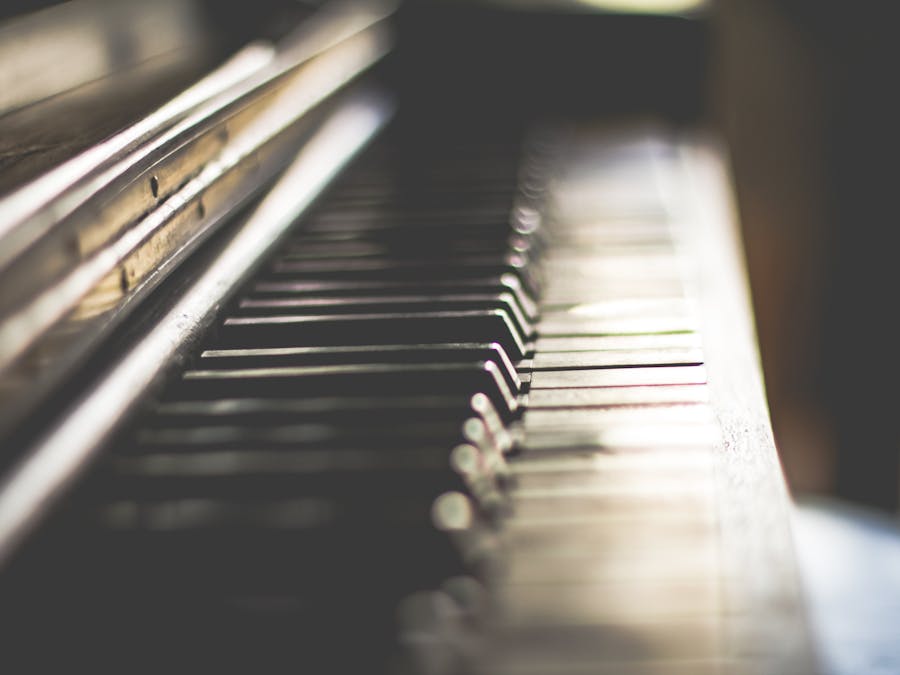 Piano Guidance
Piano Guidance
 Piano Guidance
Piano Guidance

 Photo: Dayvison de Oliveira Silva
Photo: Dayvison de Oliveira Silva
Challenges of Piano Tuning Piano strings hold much more tension than guitar strings, so stabalizing the pitch takes more nuance than just turning the tuning pin. Strings can break if you are inexperienced, and replacing them requires additional parts and expertise.

Two of the pirates were hanged but William Swallow escaped the gallows to be transported to Australia – for a third time. He died of consumption in...
Read More »
In 1990, a global treaty was signed, banning trade in all kinds of rhino or elephant ivory. Pianos with ivory keys are no longer manufactured, but...
Read More »If your piano is starting to sound out of tune, you may be interested in trying to tune the piano yourself. You probably realize that tuning a piano is a much more complicated process then tuning a guitar. But how hard is it really? Could an amateur do a half decent job after a days work? While I am not a piano technician I wanted to answer this quetion for myself (I thought hey, maybe tuning pianos could be an easy side hustle). To help you decide if you can tune your piano, I will give an overview the process, including the cost of the tools, and challenges/dangers involved. This is not a how-to guide. I leave that to professional technicians. This article simply addresses whether you can tune a piano yourself. For the adventurous, you can check out this detailed plan for how to tune your piano. So, can you tune your own piano? Yes you can, however, it’s extremely difficult! You need the right tools, a lot of patience, and should tune a junker piano first. You also, won’t be able to tune it to the level of a professional. To give you a sense of the energy required in the task, I read about amateurs who were able to tune their piano over the course of a week after watching after watching many hours of youtube guides. I also read of a piano technician instructor who gave 20 hour trainings to prospective technicians and after the training he thought about 35% of trainees were able to perform acceptable tunings (source found here). How long does it take for a pro to learn? One technician said it took him 6 months of frequent tuning as an apprentice before he felt consistent tuning pianos. Other benchmarks I saw floating out their were 1000 tunings or up to 3 years, before you are a proficient tuner! Let’s understand the challenges you are up against, so you can see why it takes so long to master.

The gold medal for the most likely song to initiate a spontaneous crowd sing-a-long, without a doubt, goes to Don't Stop Believin'. Oct 22, 2016
Read More »
Because there are many different types to suit different players. As a guide, we can say $60 – $1000 will buy a keyboard for players of all skill...
Read More »To tune a piano you will need an electric chromatic tuner, a piano tuning lever, and some rubber mutes. electric chromatic tuner – $0-$1000. For a crude tuning you can get away with a free tuning app downloaded to your phone. For more accuracy, you will need a high quality tuner. Ideally the electric tuner would have a physical needle as this gives more accuracy, while a tuner with an electronic display may jump around more if it is poorly made. Professionals may use tuners that cost hundreds of dollars. Check to make sure that the tuner is set to “A440.” This means that the A above middle C resonates at 440 hz. This is the reference point in the standard tuning systems. For a crude tuning you can get away with a free tuning app downloaded to your phone. For more accuracy, you will need a high quality tuner. Ideally the electric tuner would have a physical needle as this gives more accuracy, while a tuner with an electronic display may jump around more if it is poorly made. Professionals may use tuners that cost hundreds of dollars. Check to make sure that the tuner is set to “A440.” This means that the A above middle C resonates at 440 hz. This is the reference point in the standard tuning systems. piano tuning lever – $50+. It is worth it to invest in a medium-high quality tuning lever. If you use a lower quality lever, you may damage the pins by rounding out the square edges. In addition, make sure to purchase a lever that will fit your pins. Typically tuning pins come with a size marking of “#2”, but you can measure the diameter and find its corresponding size here. It is worth it to invest in a medium-high quality tuning lever. If you use a lower quality lever, you may damage the pins by rounding out the square edges. In addition, make sure to purchase a lever that will fit your pins. Typically tuning pins come with a size marking of “#2”, but you can measure the diameter and find its corresponding size here. Rubber Wedge Mutes -$1+. Some keys have two or three corresponding strings. In this case you need to dampen some strings so you can accurately tune the rest. Some keys have two or three corresponding strings. In this case you need to dampen some strings so you can accurately tune the rest. Other tools. You may need a light source and a screwdriver to effectively access the inside of the piano.

If it is a few bucks, there is no chip. If a new key costs $50 to $100 or more, it may have a chip. There are also online ways of finding...
Read More »
While Peppa Pig is predominantly aimed at children aged 4 to 6 years, there is no upper age limit for who can watch Peppa Pig and it is enjoyed by...
Read More »
The most striking difference between the two approaches is the fact that the Suzuki method involves the parent 100% of the time, which enables...
Read More »
The key of C Major uses no sharps or flats. It is the only major key using no sharps or flats.
Read More »
Songs to Battle Depression “Unwell” by Matchbox Twenty. ... “Better Place” by Rachel Platten. ... “Screen” by Twenty One Pilots. ... “Last Hope” by...
Read More »
How Much Does an Upright Piano Weigh? A classic upright piano typically weighs between 500 and 800 pounds. It usually takes at least four people to...
Read More »